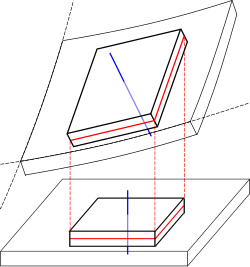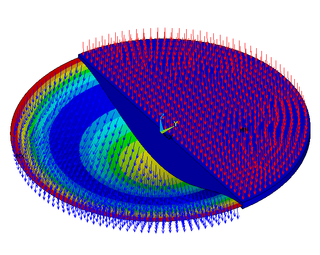The strain energy of bending of a thin rectangular plate of uniform thickness  is given by is given by 
where  is the transverse displacement, is the transverse displacement,  is the length, is the length,  is the width, is the width,  is the Poisson's ratio, is the Poisson's ratio,  is the Young's modulus, and is the Young's modulus, and 
The potential energy of transverse loads  (per unit length) is (per unit length) is 
The potential energy of in-plane loads  (per unit width) is (per unit width) is 
The potential energy of tip forces  (per unit width), and bending moments (per unit width), and bending moments  and and  (per unit width) is (per unit width) is 
A balance of energy requires that the total energy is 
With the Reissener–Stein assumption for the displacement, we have   
and 
Taking the first variation of  with respect to with respect to  and setting it to zero gives us the Euler equations and setting it to zero gives us the Euler equations 
and 
where 
Since the beam is clamped at  , we have , we have 
The boundary conditions at  can be found by integration by parts: can be found by integration by parts: 
where 
|


































































































































